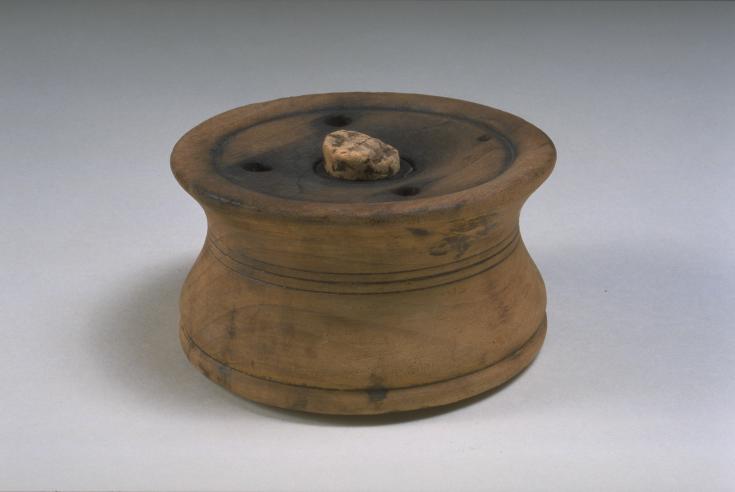Send an E-Postcard of:
Wooden inkwell

(c) Pocumtuck Valley Memorial Association, Deerfield MA. All rights reserved.
Contact us for information about using this image.
In the 1700s and 1800s, people learned to read print before they learned to write. Scholars in district schools in New England typically began learning to write in cursive with a quill pen and ink at about the age of eight or nine. They practiced on blank sheets of paper folded and sewn into "copy books." Students "copied" the writing examples the teacher wrote at the top of the page. Writing clearly with a quill pen required patience and skill. The quality of ink the writer used also affected the finished product. The Chinese and the Egyptians pioneered inkmaking. By the 1700s, there existed many recipes for making ink. Typical coloring agents were berries, nutshells, different types of wood, and lampblack. Inkwells like this one stored the ink and pens. Inkwells typically were designed to be difficult to tip over. The cork on this inkwell helped to keep the ink from spilling and helped to keep it from evaporating.
top of page
|
|





